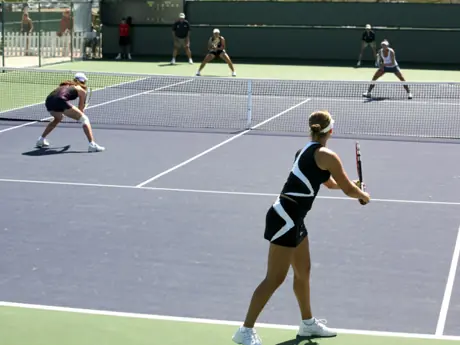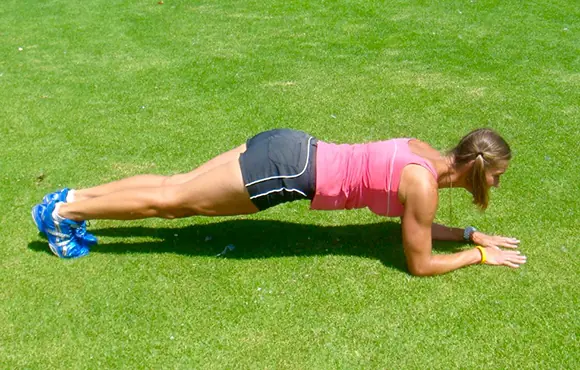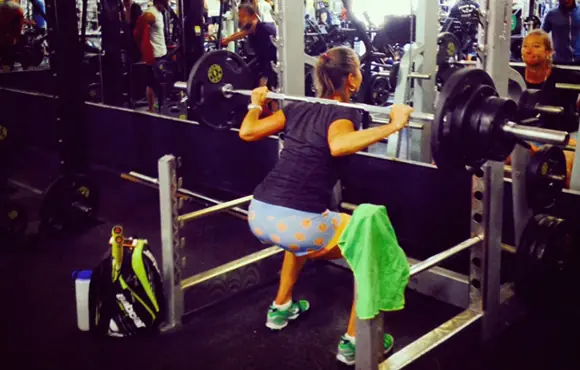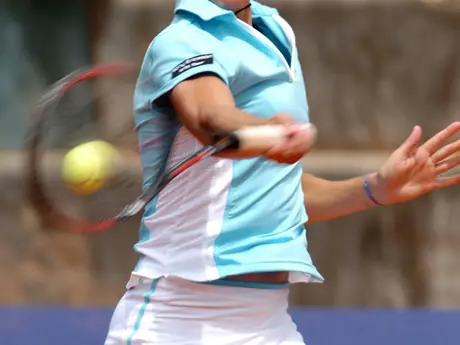If you can plan on where your opponent is going to hit the return of serve this can help you to be aggressive and win the point.
Another advantage of serving down the middle is the height of the net. At the middle of the court, the net is at its lowest point. This will allow you to have more margin for error on the serve.
More: No. 1 Serving Drill to Keep Your Ball Out of the Net
Also, when serving down the middle the travel distance for the ball is shorter than serving out wide. This means the serve will be traveling at a faster pace when it gets to the opponent due to less wind resistance.
The downfall to serving down the middle is there is no open court to hit the ball into. You will have to create a tougher angle to hit a clean winner.
Serving at Your Opponent
Serving into the body of you opponent, if done well, handcuffs the opponent not allowing him to step into the ball and hit back a hard shot.
More: 5 Steps to a Supersonic Serve
This would allow you to approach the net on a weak return, or control the point from the baseline. If the serve is executed correctly it does not let your opponent easily come up with a great angle to hit a winner which can give you the control of the point.
There are two choices of placement, which may get you in deep trouble. These two would be directly to the opponent's forehand or backhand.
You'll have to hit the ball at your opponent's body to effectively jam him/her. If you're off by a foot or so they may be able to easily step out of the way and pound a return within their comfort zone.
More: 7 Ways to Attack a Weak Second Serve
Here's an trick that might help you understand the difference between the three good choices and the two poor choices. Hold out your right hand (with your fingers extended) towards the deuce service box. All five fingers represent choices of placement. The two bad choices would be the ring finger and the index finger.
In addition to the three different options of serve placement there are the 4 different types of serves. This will help you to mix up your types of serves and truly keep your opponent guessing. If your opponent gets used to one serve in the same spot you could be in deep trouble.
More: 4 Game-Changing Defensive Tips
 Search for your next tennis event.
Search for your next tennis event.
- 2
- of
- 2
About the Author









Discuss This Article